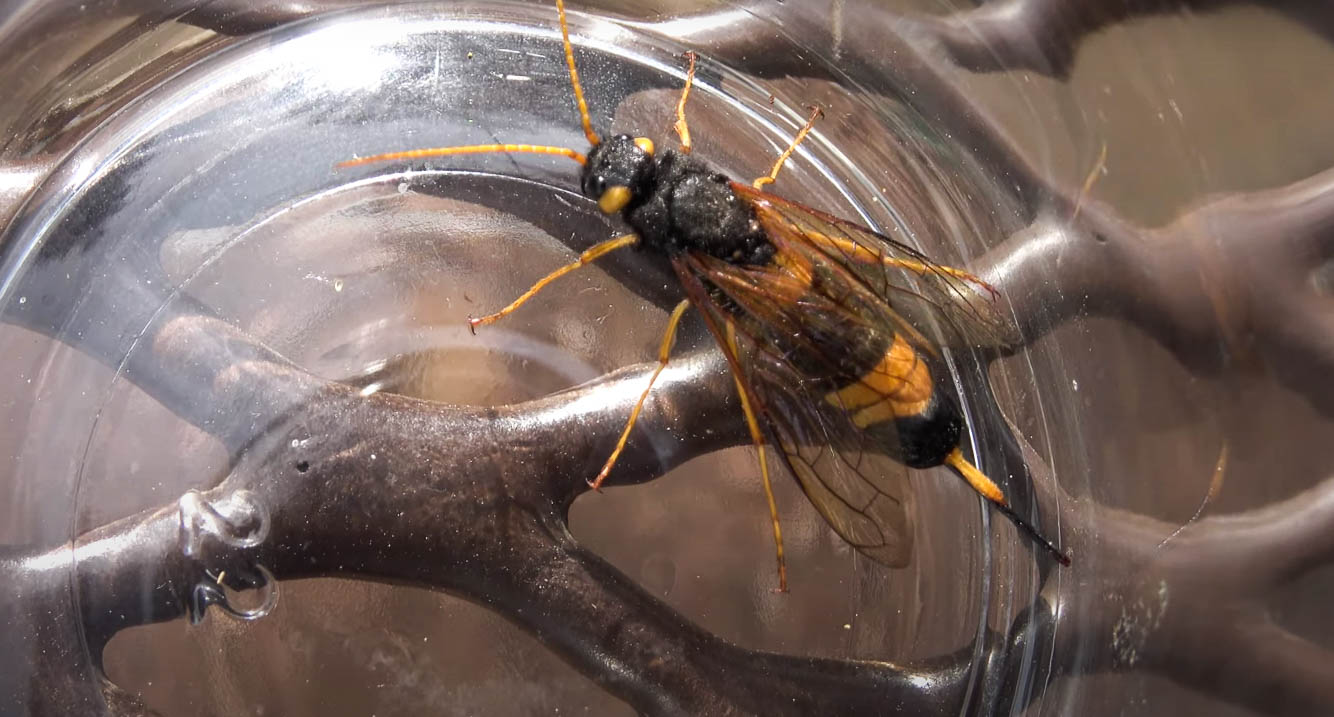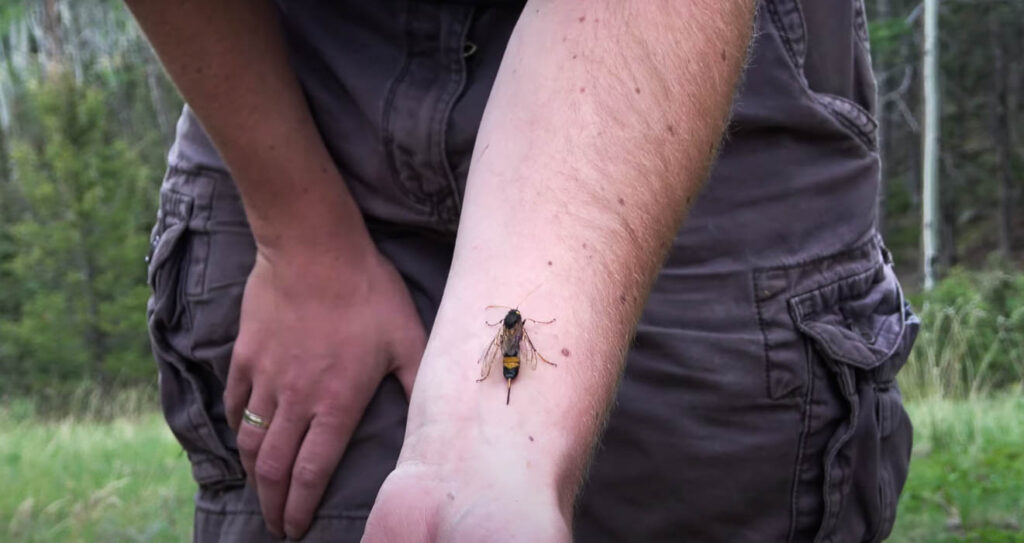About Wood Wasps
About Wood Wasps
The wood wasp is also known as the horntail. It got this name because of its ability to drill into wood. The wasp is not aggressive but can be damaging to conifer trees, either dead or alive. Trees are the only thing these wood wasps will make holes in. They do not bore into furniture or buildings.
Appearance
The wood wasp is large in size and can generally get up to one inch in length and sometimes longer. They appear to look like wasps do, however, they are elongated. Their body is cylinder shaped and does not have a waist. The wood wasp is typically a dark metallic blue or it can be red, black, or yellow in color. When they are flying around, you will hear a loud buzz sound. The females are similar to the males but they are not exactly alike. The female appears larger than the male and has a long ovipositor to lay eggs that can go longer than her body. She only uses the ovipositor to lay eggs and not to sting.

Behavior
Wood wasps like a small colony. They emerge from the wood chewing through until they can find an exit hole. They are non-aggressive and try to stay away from human activity.
The female wood wasp is the one that chooses the trees to lay all her eggs. She bases her decision on the overall health of the tree. If the tree is already deceased, the female will choose it to lay her eggs.
When the weather is bad or the conditions in the environment are not ideal, the larvae will enter diapause, which is a state where they can stop further developing and will wait until the conditions get better before they continue to grow. This is a sure way to ensure that the wood wasp species survives.
Life Cycle
The life cycle for a wood wasp begins with the female who will drill her ovipositor approximately three-fourths of an inch inside the wood of a tree that is either dead or is dying. She will lay anywhere from one egg to seven eggs at one time. After the eggs are laid, she is capable of squirting fungus from a gland located in her abdomen. After squirting in the fungus, she will then continue to lay more eggs and can lay up to two hundred eggs. The eggs will hatch between three and four weeks and then the larvae that hatches from the eggs will create a tunnel to the wood that is infected with fungus.

The larvae will use their abdomen to push forward through the wood eating the softer wood that lies just underneath the bark. They will then proceed through the fungus and into the hard wood then come back to the sapwood before they are done eating.
The larvae will continue to feed through at least five more stages. This process can take between one and five years, depending on how cool the climate is.
Habitat
The only habitat needed for wood wasps are trees within a wooded area.
